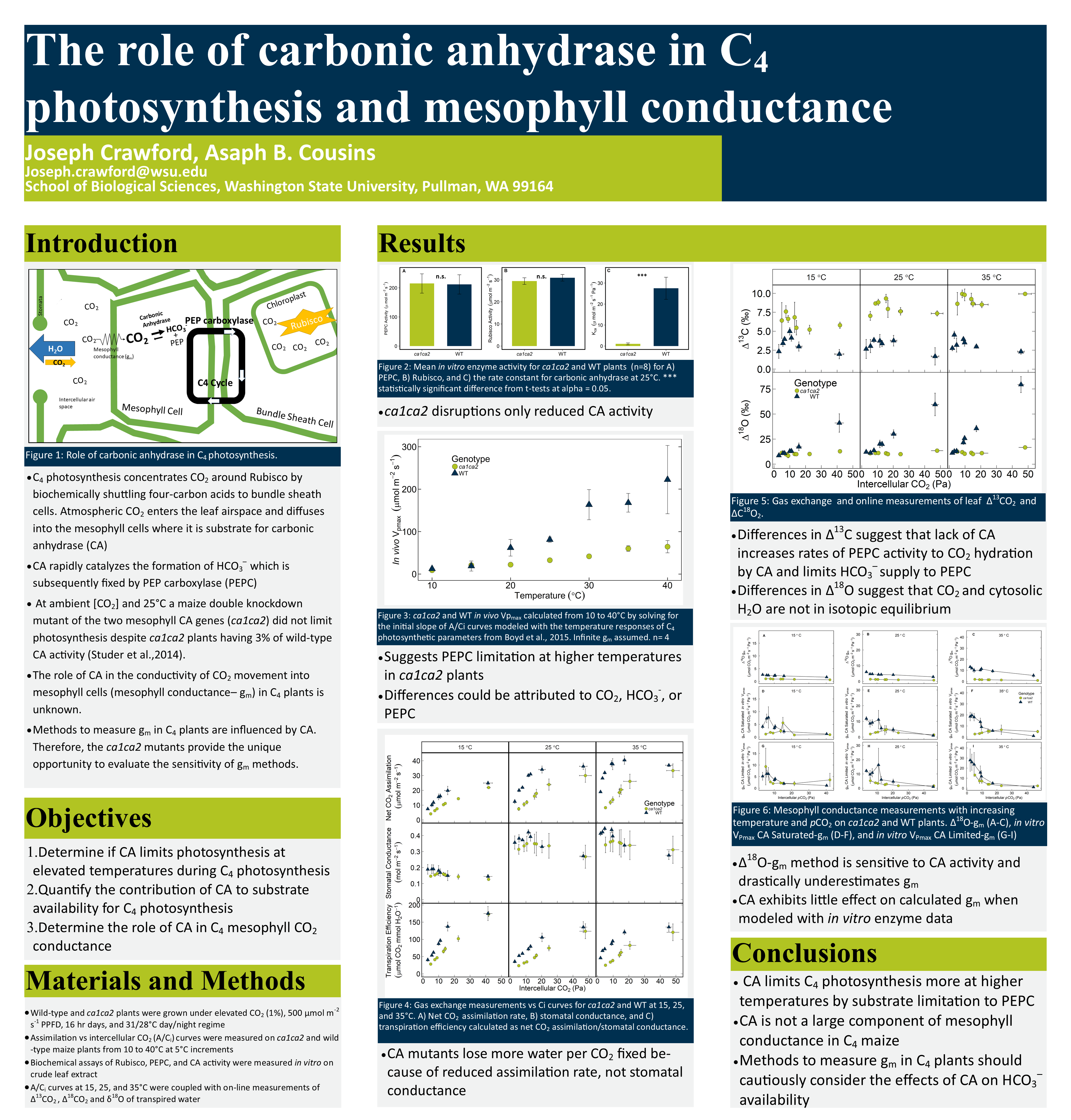The Role of Carbonic Anhydrase in C4 Photosynthesis and Mesophyll Conductance
Date:
Presentation on how the first enzyme involved in concentrating CO2 in C4 photosynthesis reacts to temperature. When carbonic anhydrase is low it may not be able to keep pace with the second enzyme in the pathway, PEPC.

Abstract
C4 photosynthesis concentrates CO2 around Rubisco by biochemically shuttling four-carbon acids to bundle sheath cells. Carbonic anhydrase (CA) is the first committed step of the C4 pathway and hydrates atmospheric CO2, rapidly catalyzing the formation of HCO3- which is subsequently fixed as substrate by PEP carboxylase (PEPc). Previous research on maize double knockouts of β-CA1;2, which had 3% of WT CA activity, did not limit photosynthesis at ambient [CO2] suggesting a limited role of CA in C4 grasses. We investigated the role of CA in limiting substrate to PEPc and conductance of CO2 through the mesophyll in response to temperature and CO2 availability. We measured gas exchange on CA mutants and wild-type maize coupled with on-line stable isotope measurements from 10 to 40°C to determine the role of CA across temperatures. CA mutants display decreased in vivo maximum velocity of PEPc with increasing temperature suggesting a rate determining substrate limitation that increases with temperature. In vitro enzyme measurements of Rubisco, PEPc and CA in conjunction with gas exchange and on-line stable isotope measurements were used to investigate the effect of reduced CA activity on mesophyll conductance to CO2. Quantification and modeling of leaf CA activity showed that mesophyll conductance was similar between β-CA1;2 mutants and WT plants. We conclude that CA is not a large component of mesophyll conductance in C¬4 grasses, however some methods may over or underestimate mesophyll conductance without careful consideration of CA activity. These findings have important implications for elucidating rate determining mechanisms in C4 photosynthesis.
